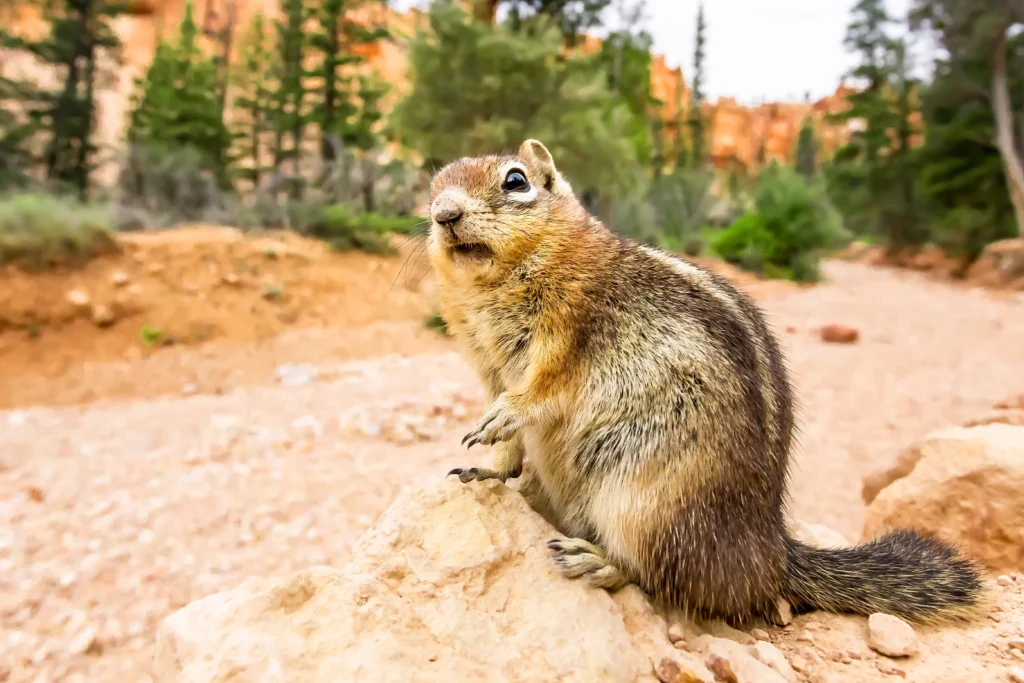A Humane Exploration of Squirrel Species, Risks, and Mitigation Strategies

Squirrels play a crucial role in the ecosystem because they help with a variety of things such as ensuring ecological balance and biodiversity. Unlike other pests like bees and snakes that may be quite dangerous to humans, this rodent is generally harmless but can be very destructive. For instance, while in your Colorado home, they can cause property and crop damage, courtesy of their chewing habits, a situation that can end up being quite expensive for you to deal with. Since you do not want such issues, it is important to deal with these pests before they end up becoming a huge problem. This article gives insights into different species you can find in the state, risks associated with having them around, and proper management and preventive measures you can take.
Understanding Squirrels
This rodent belongs to the sciuridae family and is characterized by its slender body and a very long tail plus some big set of eyes. They come in distinct shapes, sizes, and colors. Some like the Bhutan giant flying squirrel are huge and can grow up to 1.2m in length while others such as the least pygmy are much smaller with a length of up to 14cm. When it comes to color, their coats range from gray, brown, red, and black.
These rodents are quite adaptable, a trait that enables them to thrive almost anywhere. They can be found in different locations such as desserts, tropical rainforests, underground burrows, in houses, and even top of trees. Anywhere is home for these pests. Similar to other rodents like mice and rats, squirrels can also set up a habitat in your home, in the hope of getting food and a warm shelter. While in here, they can cause different issues like property damage and even pose health risks to you and your loved ones. It is at this point that immediate removal is needed.
Why Squirrels Love the Climate and Environment in Colorado!
The state boasts a great habitat diversity, which makes ideal for squirrels to thrive. As earlier mentioned, these animals can live almost anywhere because they adapt easily to their environments. The rich diversity of this state plus different elevations has resulted to different species of this rodent, each adapted to where it lives. This means that you can find them in areas like grasslands, woodlands, mountains, and forests.
Since they are extensive feeders, they are able to do well in the state because of the abundant food sources, including great plant life that produces nuts and fruits. These rodents can easily feed on this and reproduce immensely. Speaking of reproducing, they are known to have a very high reproductive rate. They have several litters of offspring every year and even extra when the conditions are good.

Another thing is that they do not face too much predation. This is enabled by their incredible speeds and intelligence. These factors contribute highly to their high population and diverse distribution in the state. Although the state’s climate depends on a variety of things like location and elevation, it is good to mention that Colorado’s climate is ideal for their existence. It experiences an array of temperatures from hot summers to cooler temperatures, depending on the elevation. Squirrels thrive much better in mid and lower elevations because they benefit from the great conditions and abundant vegetation. In contrast, the rodents are not that common in higher elevations because of limited vegetation and harsher climatic conditions.
Common Squirrel Species in Colorado
There are over 200 species but only a few can be found in the state. This part of the article looks at exactly that.
Fox
Native to North America, this is one of largest species and can grow up to 76cm in length. It can be recognized from its brown color, which can at times be combined with other colors like gray, orange, or yellow. They can be found in a wide array of environments like parks, urban areas, and woodlands.
American Red
Unlike the fox, this one is quite small and weighs about 200 to 250g and a maximum of 35cm in length. It can be recognized from its reddish color with a white underside. It can be found in montane habitats and coniferous forests. While here, they feed on different things like pine cones and nuts.
Abert’s
When it comes to size, these ones are in the middle of the fox and the American red. They can grow up to 58cm in length and their tail can reach up to 25cm. They can be recognized from their ear tufts that can extend up to 3cm. The foothills of Colorado’s Rocky Mountains house fully black colored kinds of this species.

Signs you are dealing with an Infestation
Now that you are familiar with kinds of Squirrels, it is now time to have a look at different things you need to watch out for so you know you have an infestation in your property. Seeing one of them might not be very concerning for you.
The reasoning behind this is that you may think that they are more of solitary animals and not quite social. However, this is not the case because although their social nature is a bit confusing, it does not mean that they are solitary. Therefore, seeing one could mean that there are others around.Another thing you may notice is noises, especially during the day.
They are most active during daylight and therefore hearing squeaking sounds in areas like the attic, basement, or crawl spaces could mean you have a problem. You may also notice their droppings, which are usually small and dark in form of pellets. This waste plus urine could produce an awful odor, which is yet another sign.
Potential Risks of Having Squirrels at Home
They might look good and cute to some individuals. However, these rodents can pose significant risks. The first major problem is property damage. They are quite chewy and love to gnaw on wood and other structural materials like electrical wiring and insulation. Damage to these elements can affect the home’s electrical connection and insulation leading to inefficiencies.
They not only affect the structures but can also pose some health risks to both pets and humans. This happens because they carry disease-causing parasites like salmonellosis and leptospirosis that can be transmitted to humans. It is for these reasons that they will need removal once spotted in large numbers.
DIY Mitigation Strategies
If you are dealing with just a small number of squirrels, you can do a couple things to get rid of them effectively. Since they get into your house through small openings, the first thing you can do is inspect your home and then seal any cracks or openings. Some of these could be on areas like vents, soffits, and siding. It is recommended that you use heavy-duty materials such as metal flashing or hardware cloth to seal since they are not easily accessible. You also want to invest in squirrel-proofing devices and install them on bird feeders to prevent them from accessing food. It is also a great idea to keep the indoors and outdoors clean at all times. Failure to this, the rodents will have enough food sources to keep them around for much longer. You may also want to try repellents like predator urine and cayenne pepper to deter these animals.
Reasons to Hire Experts
DIY methods are great but the only work if you are dealing with a smaller number of squirrels. Apart from being quick to act, they are quite intelligent and can escape your traps with ease.
Removing them from your property can therefore end up being quite overwhelming and tasking. Due to this, it is best that you left this task to professionals. They have the needed experience and expertise with these animals. Therefore, they know the best techniques to implement to rid them off your property in the safest ways possible.

Unlike inexperienced individuals, professionals use human methods to remove them. They do not just kill the pests. Instead, they do the task in accordance with rules and regulations of dealing with such pests.
Preventive Measures You Can Take
As you have probably realized, squirrels in your home are not only destructive, but they also put you and your loved ones at the danger of contracting some serious diseases. Therefore, it is best that they remain in the wild rather than finding home in your house. Lucky for you, you can take some actions to ensure they are never a problem for you again.
They come into your property in search of food. Since you are doing great for yourself, this is something that they will definitely find in plenty. The first step you can take in preventing them from coming back is cutting on this food source. Consider storing foods like bird feeders in safe places that are out of reach. You could even use proofing devices to ensure they have zero access. Part of cutting on the food source entails cleaning the outdoors regularly and throwing away any fallen nuts and fruits. You should also keep the garbage cans closed and sealed at all times. It is also a great idea to seal entry points and trim shrubs and branches over your house, as they could act as a good bridge for the rodents to access the indoors.
A squirrel is a rodent that can be quite destructive. Apart from this, it may carry disease-causing parasites. Since you do not want any harm to your loved ones or have to spend extra money in repairs, it is a good idea to get rid of these pests as soon as you notice them. You can do this by yourself or hire professionals to assist. The DIY route might be tempting because it will save you some money; however, it is best to let pest control experts in Colorado do their job, especially if you are dealing with a large number of them.
If you think squirrels are causing you problems in Colorado Springs, CO or anywhere in Teller County or El Paso County, please do not hesitate to
contact us today! We will help resolve your problem quickly, safely, and at affordable rates.